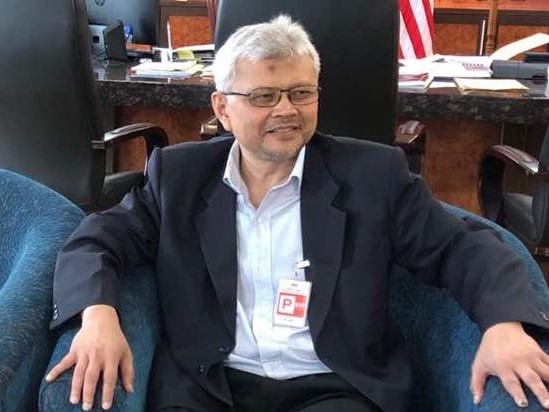Dr Musa Mohd Nordin, Paediatrician
Chan Li Jin, Health Activist
Prof Thiyagar Nadarajaw, Paediatrician
The post-COVID years have exposed and exacerbated deep-seated issues within the Malaysian public healthcare system, many of which are inherited from political and bureaucratic predecessors. Budget 2026 presents significant opportunities to address critical issues and bring solutions that break the vicious cycle within Malaysia’s public healthcare sector. But first, we must acknowledge and recognise underlying issues:
1. High Attrition of Healthcare Workers (HCWs): Our public sector is an excellent training ground, churning out top-class specialists, doctors, and nurses. Unfortunately, unsupportive, unfriendly policies such as the Contract Doctor system, job insecurity, lack of permanent posts, and limited specialist training opportunities drive them to greener pastures.
2. Critically Low Morale:
Severe understaffing forces remaining HCWs to handle unsustainable patient loads, leading to exhaustion, burnout and mental health crises. HCWs feel undervalued and unheard, where their sacrifices during the pandemic and beyond are not compensated by tangible improvements in their welfare, pay, or working conditions.
3. Severe Overcrowding and Capacity Strain:
Patients are often stuck in EDs, gridlock for over 24 hours due to a lack of inpatient beds. This phenomenon, known as “boarding,” compromises care and demoralizes staff. Outpatient appointments and elective surgeries face waits of months or even years, forcing patients to seek costly private care or suffer in pain.
4. Impractical Initiatives & Communication:
The Rakan KKM program faces criticism from medical professionals, experts, and public advocacy groups, for creating a two-tier system with operational and legal ambiguities and further burdening overlooked and burnout HCWs. Additionally, the DRG (Diagnosis-Related Group) for the private sector appears to pit public and private sectors against each other without a clear, detailed implementation plan.
5. Isolating Primary Care and the Private Sector:
Consultation fees of GPs, crucial primary care providers, have stayed at RM35 for 33 years (since 1992). Despite multiple attempts, the fee revision remained an unfulfilled promise. Similarly, the private sector is often framed as the “problem” behind medical inflation, without acknowledging the public sector’s capacity limitations that drive patients to private care.
BUDGET 2026 FIXES
The Malaysian Medical Association (MMA) recommended focusing on workforce retention, system overcrowding and fostering public-private collaboration. The MMA proposals go beyond isolated quick fixes and aim to create a more sustainable and resilient public healthcare system. Utilising a People, Process, Technology (PPT) methodology helps to provide structure towards enhancing organisational effectiveness.
People:
Absorbing all contract doctors into permanent positions and increasing on-call allowances directly tackles the root causes of brain drain and low morale. This has been acknowledged by our honorable health minister, who recently said, “investing in our health care workers is as vital as upgrading infrastructure because without a motivated and well supported workforce, quality care cannot be achieved.” [1]
Adopting GPs as MOH’s essential partners and front-liners in managing non-communicable diseases (NCDs) is important. This allows the outsourcing of national programs, such as health screenings and vaccinations as preventive health measures. Successful public-private partnerships (PPP) during the COVID-19 vaccination campaign shows this model can work to reduce the burden on public hospitals and clinics.
Process:
The MOH must learn from global multinational corporations when it comes to manpower distribution, akin to the uncompromising safety culture of the airline industry.
It starts with an all-of-ministry effort, where every MOH personnel work hand-in-hand with the minister in mitigating the sky-rocketing dissatisfaction index and attrition rates of the healthcare human capital.
Dissent in the ranks results in resistance to change. One example is the
Pertukaran Suka Sama Suka (P3S) package mooted in early 2025, which received lukewarm response.
Within 6 days of its launch, the P3S portal attracted 37,373 visits (input indicator), 2,256 profiles (process indicator) and 21 matches (output indicator)
This positive start, however, came to a screeching halt at the Unit Sumber Manusia (USM), with 0 jumlah pertukaran(outcome indicator). What would typically take 1-14 days to approve is now at a standstill for reasons unknown.
This P3S is a major breakthrough in HCW human resource planning designed in-house by truly selfless, innovative and resilient Health Performance Unit (HPU) team at virtually no cost.
Other ministries and private healthcare institutions are actually watching P3S closely as a potential game changer in HR management.
Technology:
In January 2024,we offered insights on addressing the issue of maldistribution of the healthcare workforce. A national dashboard for transparent workforce mapping is a strategic tool for long term, data driven HR planniing. [2]
This AI-driven dashboard, provides better forecast and allocation of manpower needs, hence minimizing discrimination and maldistribution.
The dashboard has already been designed by the Health Performance Unit (HPU), only awaiting green light for roll out.
BRAVE BOLD REFORMS
The fundamental foundation to real reforms are to increase healthcare spending to 5% of GDP, and adopt a collaborative approach.
As the Association of Private Hospitals Malaysia (APHM) emphasizes, reform must target the public sector that serves over 70% of Malaysians, as it is the system’s “tipping point”.
This involves unpopular but necessary moves such as increasing the registration fees (excluding the B40) of public health facilities, that would help in the healthcare facility’s upkeep and maintenance.
Longer-term strategies such as a permanent council with equal representation from the Ministry of Health, GP groups, Association of Specialists in Private Medical Practice Malaysia (ASPMP), Association of Private Hospitals of Malaysia (APHM) and other major healthcare stakeholders needs to be initiated. This council can co-design all major reforms, from DRG to primary care networks.
For a start, the Council can frame DRG as the necessary data-driven foundation for a future National Health Insurance scheme, instead of a cost-cutting exercise for the private sector. This will ultimately benefit the public system with more sustainable funding.
ENOUGH OF ‘PI MAI PI MAI TANGTU’
The public sector’s struggles with attrition, morale, and overcrowding are not isolated problems – they indicate a system that has been underfunded and under-appreciated for too long.
The solutions require political courage and significant investment, in this order of priority:
Firstly, stabilize the workforce with immediate financial and career rewards. Second, decongest facilities by strategically partnering with and funding the primary care network. Last but not least, rebuild trust through inclusive governance and transparent communication.
Fixing the public health sector proves Malaysia’s genuine commitment to Universal Health Coverage, thereby creating a more balanced and resilient overall health system. May the Budget 2026
bring us one step closer to this worthy goal.
References:
[1] https://www.businesstoday.com.my/2025/09/28/budget-2026-to-prioritise-healthcare-upgrades-and-workforce-wellbeing-minister-says/


